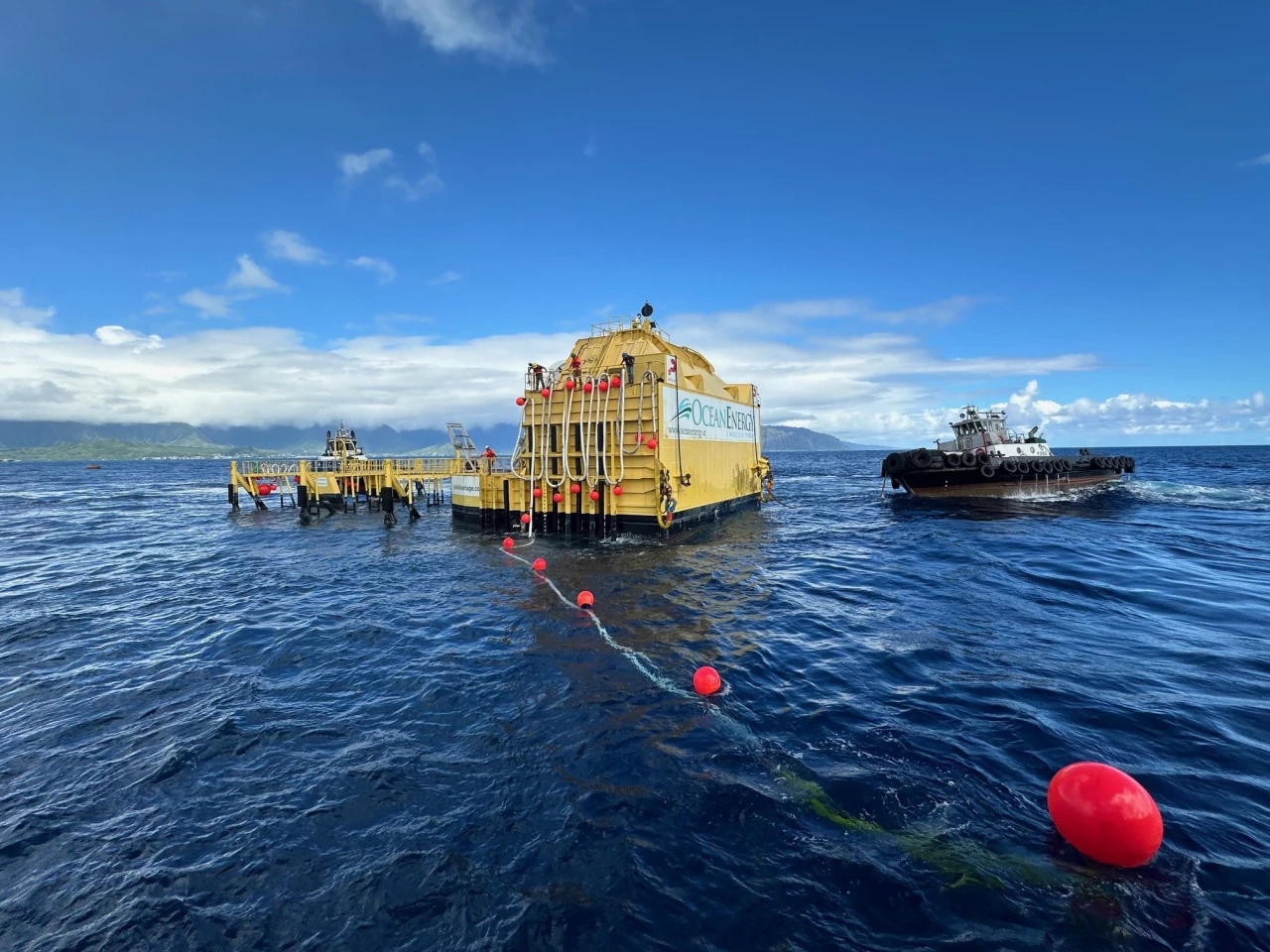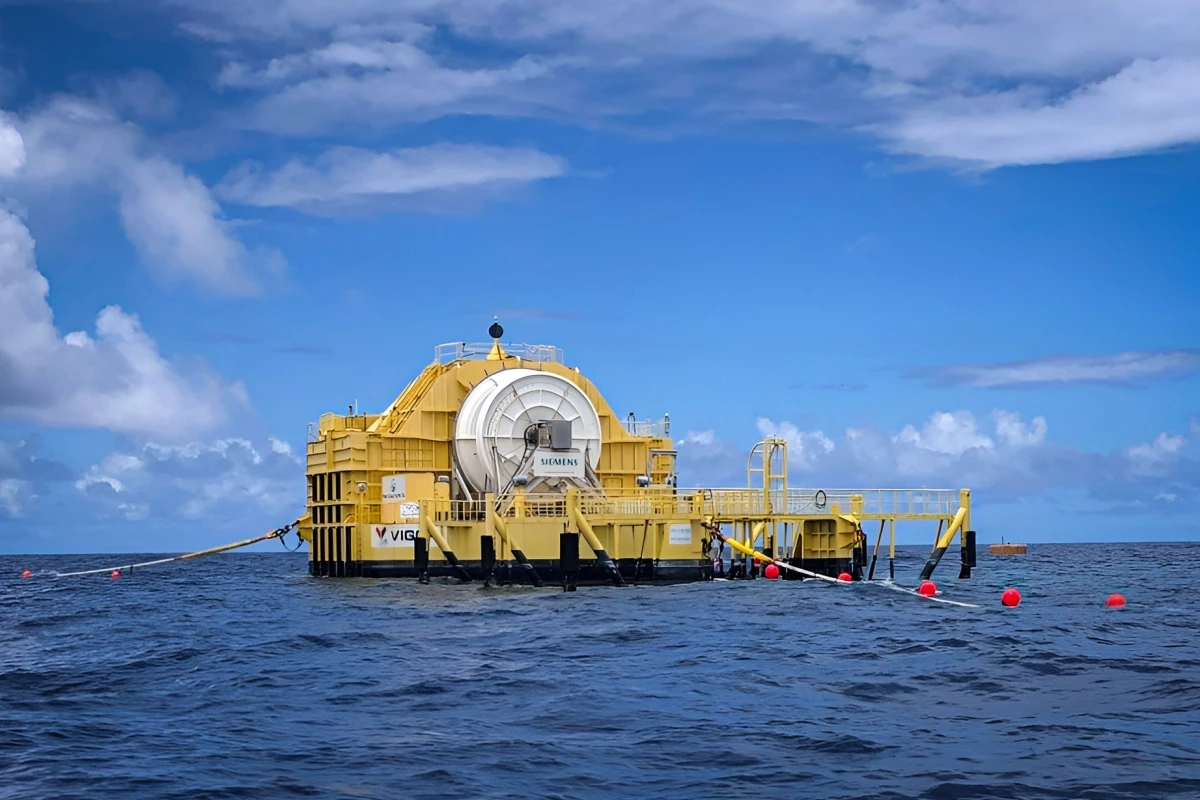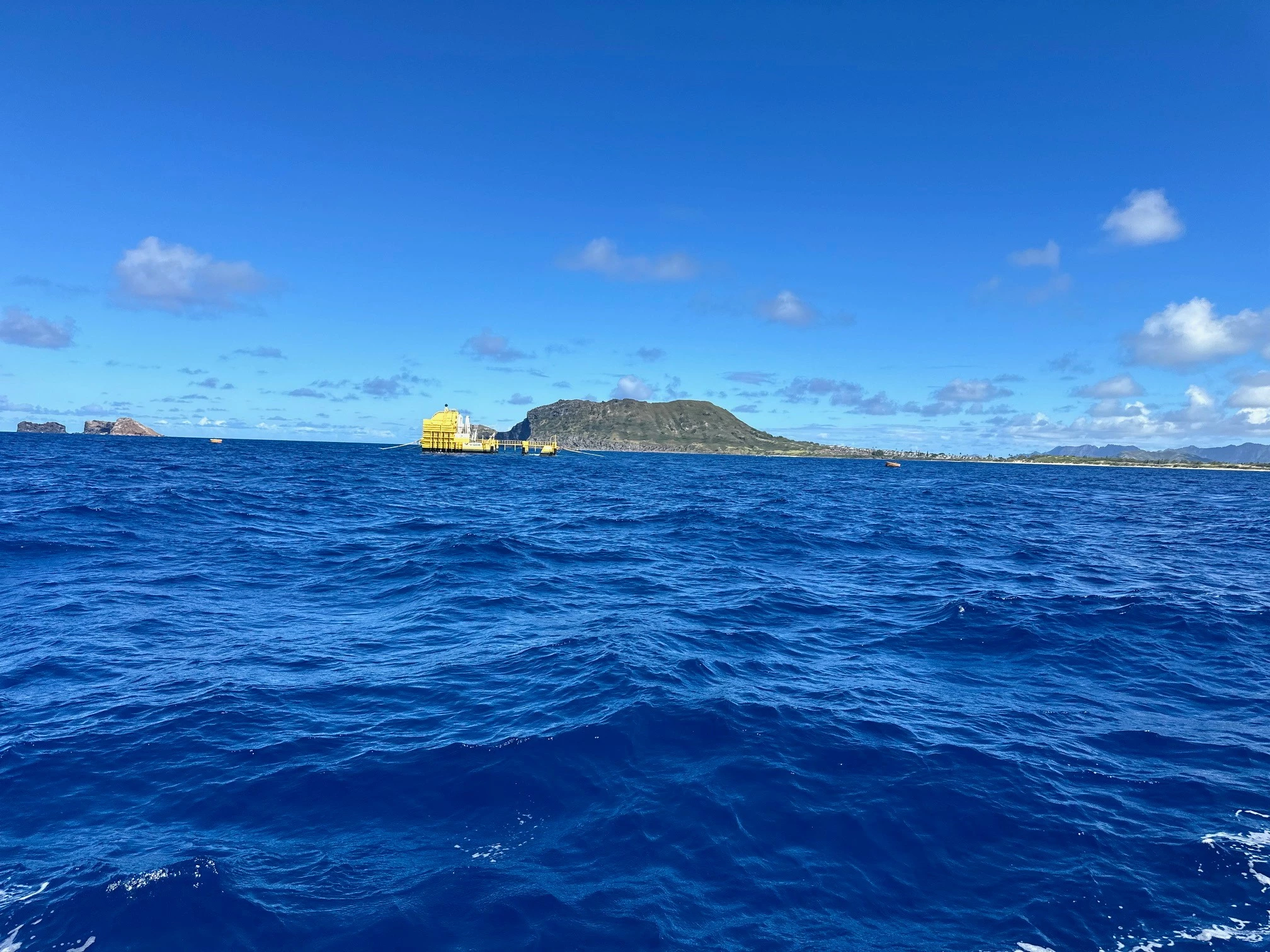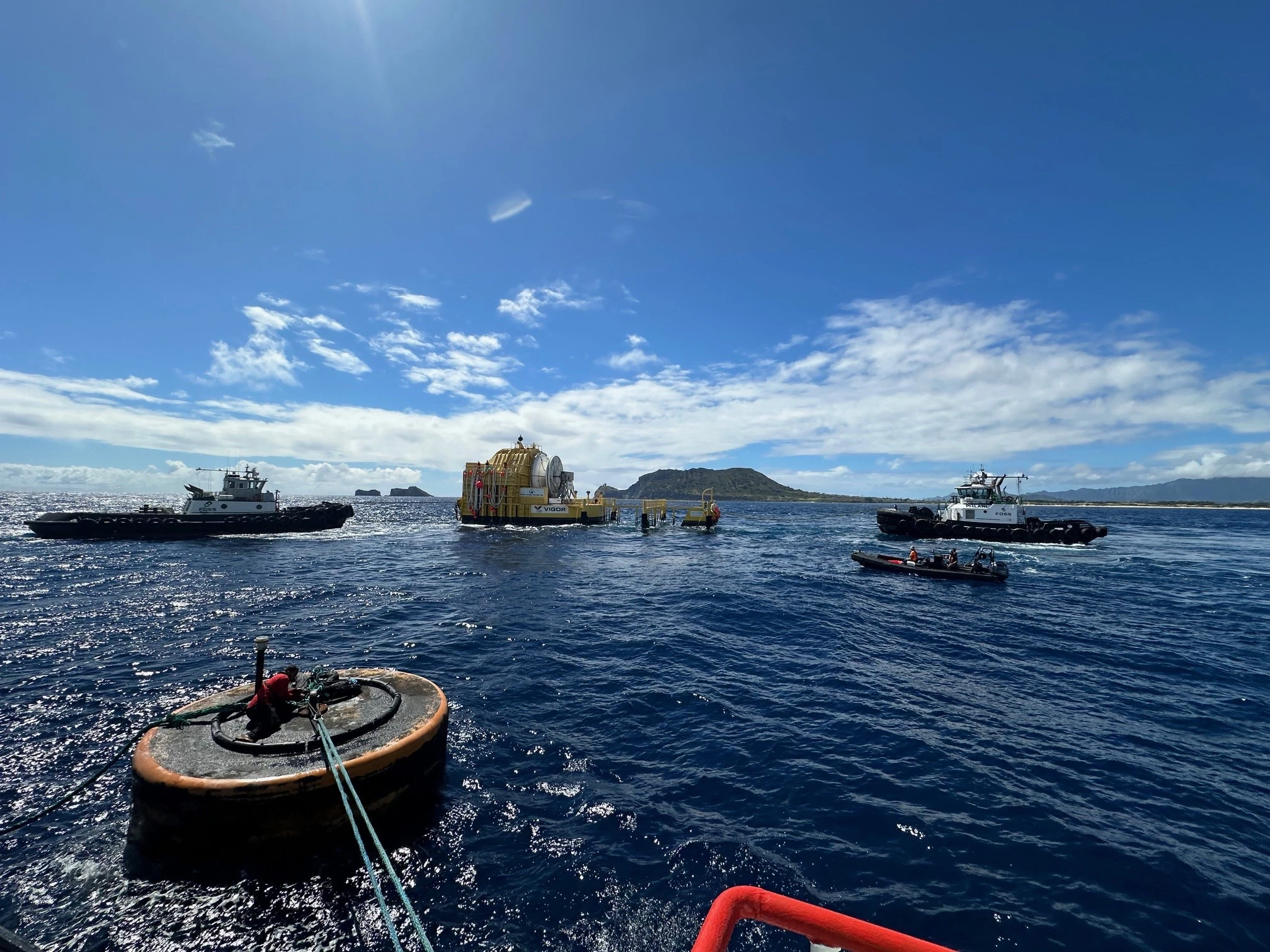Ocean Energy has deployed its 826-tonne wave energy converter buoy OE-35 at the US Navy's Wave Energy Test Site off the coast of the island of Oahu ahead of it being hooked up to Hawaii's electricity grid.
Measuring 125 x 59 ft (38 x 18 m) with a draft of 31 ft (9 m), the OE-35 was already a familiar sight in Kaneohe Bay on the Windward side of Oahu. Fixed just north of Mōkapu Peninsula, which is home to a US Marine Corps base that I became very familiar with years ago when its F-18 fighters used to go blasting over my anchored boat in the early morning.
The system has not only been tested in Hawaii, but also in Scotland as part of a US$12-million project funded by the US Department of Energy's office of Energy Efficiency and Renewable Energy and the Sustainable Energy Authority of Ireland (SEAI). With a potential output of 1.25 MW, OE-35 harnesses energy from the waves using a remarkable double-flow air system.
Some wave power systems work by using passing waves to compress a column of air that drives a turbine as the wave passes and the air expands. However, these usually work like a piston engine, with a power stroke followed by a dead period while air is vented and the system resets itself in anticipation of the next wave.
OE-35 is different in that it uses a turbine that works on the principle of the Wells turbine that was invented by Alan Arthur Wells of Queen's University Belfast in the late 1970s. This is a low-pressure air turbine that rotates continuously in one direction independent of the direction of the air flow. In other words, as the wave compresses the air in three chambers inside the buoy, the turbine spins. Then the air expands and the flow reverses but the turbine still spins in exactly the same direction. This eliminates the need for complex mechanisms and valves to deal with the bidirectional air flow.
It's not the most efficient way of generating power because the turbine blades have a higher drag coefficient than conventional turbines and the system is prone to stall. However, it works well enough that the subsidiary of Ocean Energy Group Ireland expects to soon commission the OE-35 following final tests and the system will be connected by undersea cable to the state's electricity grid.

At 1.25 MW, it isn't much against a state that consumes many orders of magnitude more, but it could be a harbinger of things to come.
"Following over a decade and a half of design, trials, testing and building, we are excited finally to be able to take this major step towards commercialization with our world-class OE-35 device," said Professor Tony Lewis, Ocean Energy's Chief Technology Officer. "This internationally significant project couldn't come online at a more critical time for the US and Ireland as the world needs to accelerate the pace of decarbonization with new and innovative technologies."
Source: Ocean Energy








